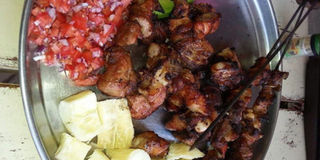Is Pork red or white meat?

Most people say pork is white meat. Is this true? –Arthur
Dear Arthur,
I know many people may not want to accept this, but pork is actually red meat. Because pork is lighter than most conventional red meat such as beef and because it becomes lighter when cooked, many people have said it is white meat. Despite the debate, according to the World Health Organisation website, pork is red meat.
Red meat has more myoglobin, a red protein-like haemoglobin that helps carry oxygen. The bigger the muscle, the more myoglobin is needed and, therefore, the redder the colour and meat.
Muscle tissue from pigs has similar demands such as those from other four-legged animals that give red meat. It is myoglobin in red meat that is linked to health problems such as cancer, the reason white meat is favoured over red meat.
Animals that produce white meat also tend to have fast-twitch fibre that is whiter in colour. Fast-twitch gives it the ability to move with dart-like movements in an instant.
Think of how hard it is to catch a fish with your hands, to knock a bird as a car approaches at great speed or even to catch a local chicken for your dinner. Unfortunately, pigs are not endowed with much fast-twitch fibre.
Regardless, there are two essential points to keep in mind. First, it is more important to focus on how the animal is reared than merely white vs red meat.
Chickens may be white meat, but if raised in cages with poor circulation, unsanitary hygiene and fed artificial feeds high in growth hormones, antibiotics and other chemicals such meat will definitely be worse for you than eating red meat from a goat eating natural vegetation and free of chemicals.
Also, whatever animal food you choose, endeavour not to eat meat more than twice a week. Not twice for each type, but, twice for all combined. The less meat you eat, the healthier you will be.




